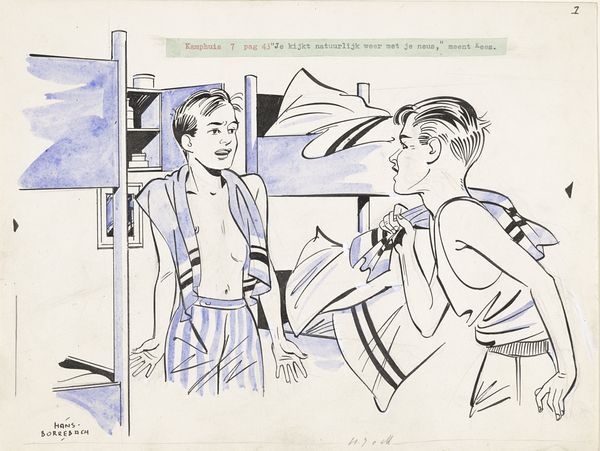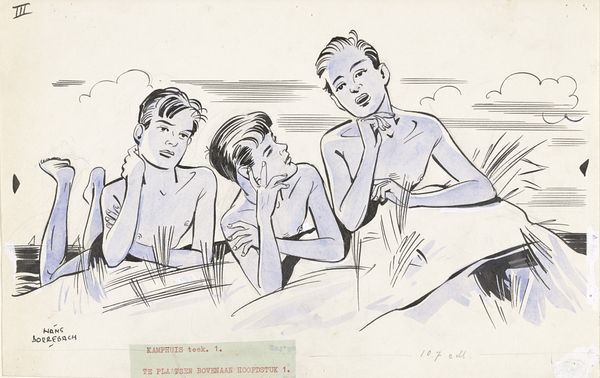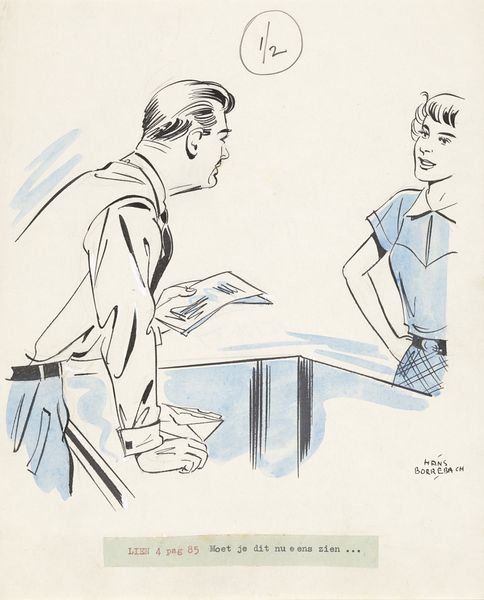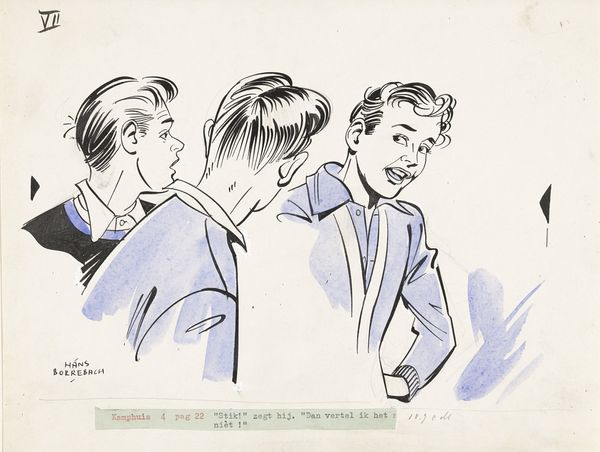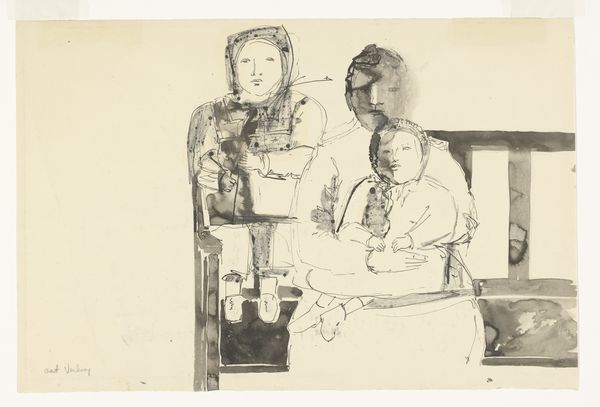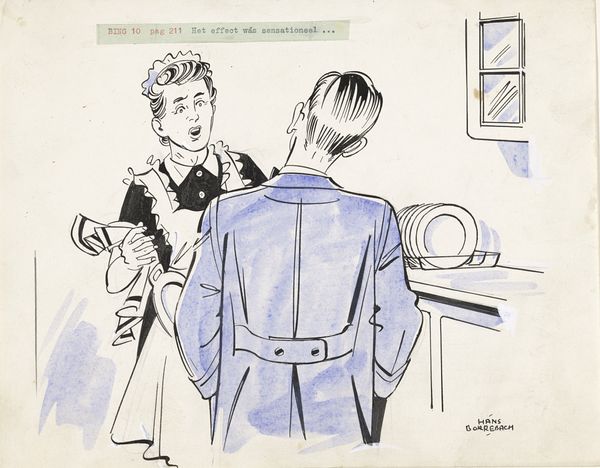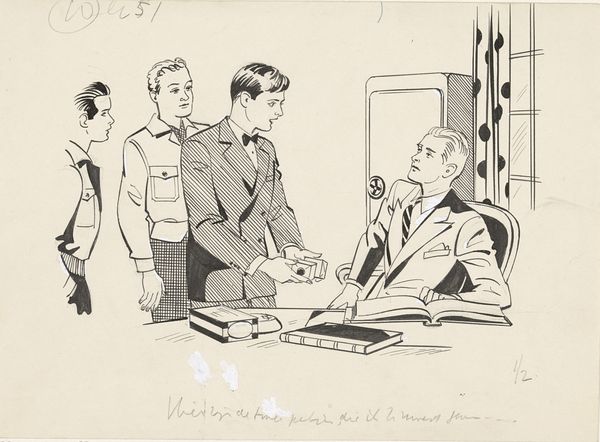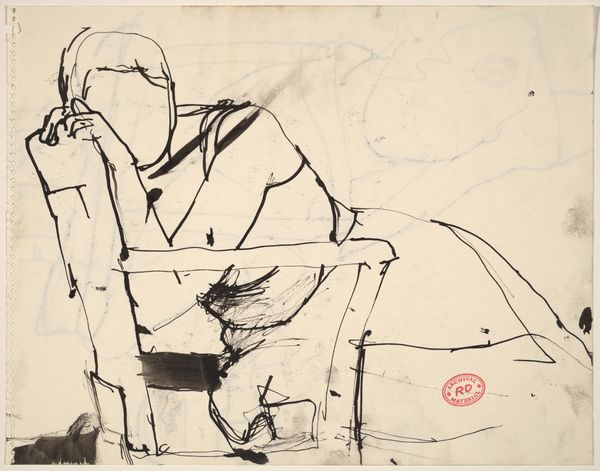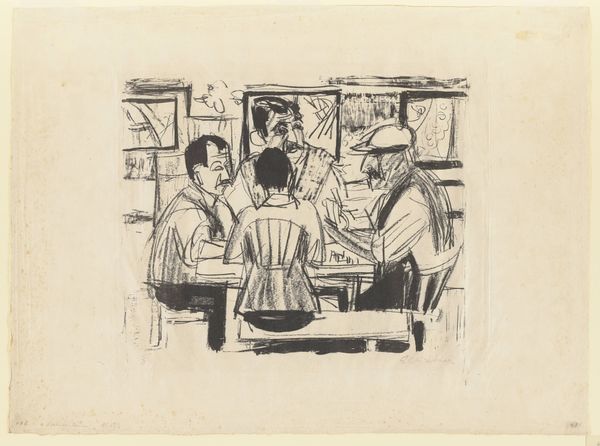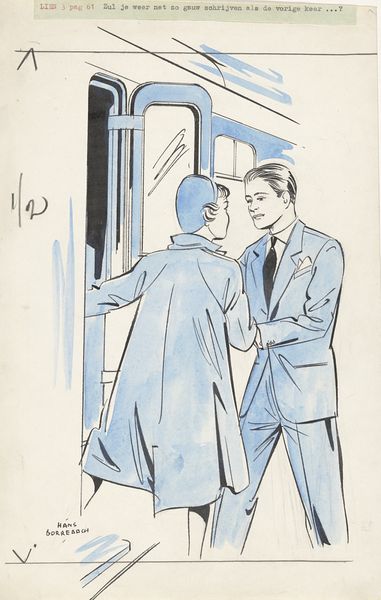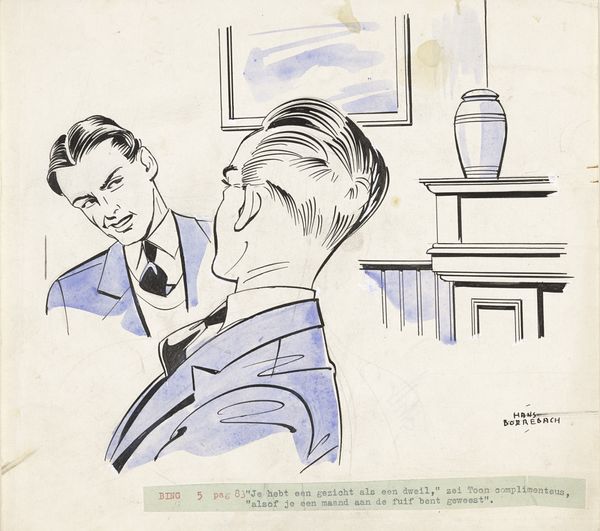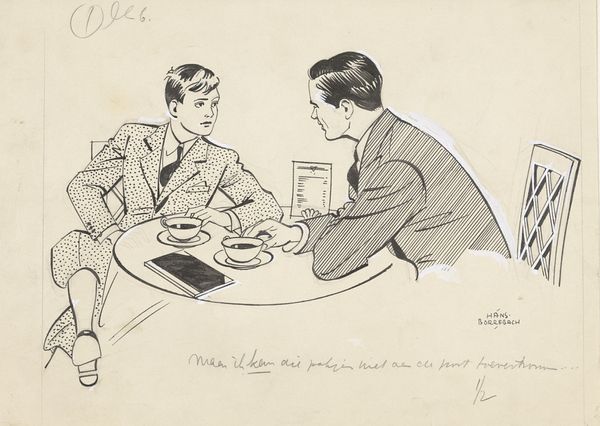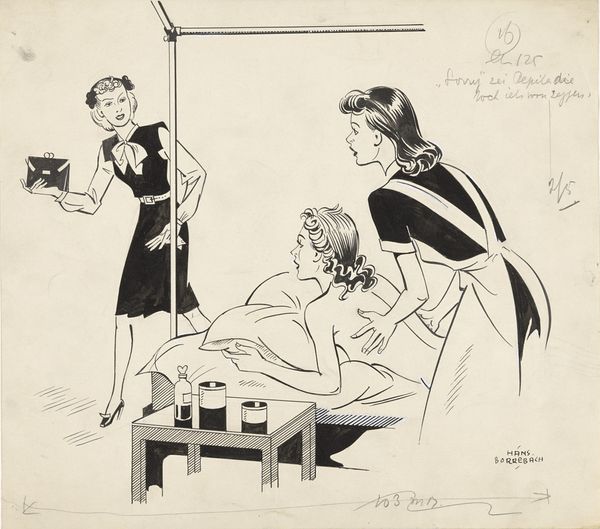
drawing, pen
#
portrait
#
drawing
#
comic strip sketch
#
table
#
imaginative character sketch
#
cartoon sketch
#
figuration
#
personal sketchbook
#
idea generation sketch
#
comic
#
sketchbook drawing
#
pen
#
cartoon style
#
storyboard and sketchbook work
#
cartoon carciture
#
sketchbook art
#
modernism
Dimensions: height 216 mm, width 287 mm
Copyright: Rijks Museum: Open Domain
Curator: Looking at this ink drawing titled "Jongen zit op een stoel tegenover meneer Van Gool" made before 1953 by Hans Borrebach, what strikes you first? Editor: There's an immediate sense of understated tension. The clean lines give it an almost graphic novel feel, but the subjects' body language whispers a story that's far from lighthearted. A serious situation sketched in the cartoon. Curator: That interplay is intriguing, isn't it? Borrebach captures a rather significant social dynamic. Note the power imbalance suggested by the composition—one figure is seated at ease, seen from behind, and the other is posed directly facing the viewer. Editor: The positioning definitely speaks to issues of authority. The figure addressed as "meneer Van Gool," appears to hold a dominant position, observed but unseen, which emphasizes his control over the interaction and perhaps the young person across the table from them. But look at this young person’s eyes. He seems determined, if nervous, to tell his story. Curator: The artist is definitely inviting the viewer to wonder exactly what kind of 'story' will emerge. His features are not exactly inviting, although sympathetic. How do you feel the medium of ink and pen contributes to the storytelling? Editor: It lends a starkness, a kind of visual honesty. No room for hiding or softening; the lines are direct, almost confrontational. This aesthetic choice amplifies the rawness of the encounter, fitting within Modernism's inclination to tackle subject matters without artifice. Curator: I agree! This is exactly the appeal, that nothing is ‘hidden.’ Now I find myself pondering: what if we recast our own perspectives in similarly unflinching lines? Editor: Absolutely. This drawing, seemingly simple, nudges us to question the power dynamics we navigate daily, encouraging a critique of how systems can influence—or even dictate—individual narratives. Thank you, Hans Borrebach, for speaking such loud volumes in sparse black lines.
Comments
No comments
Be the first to comment and join the conversation on the ultimate creative platform.
